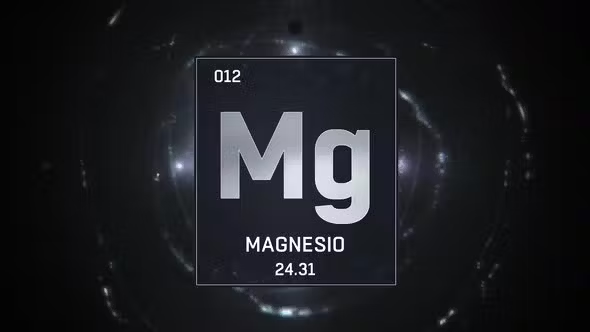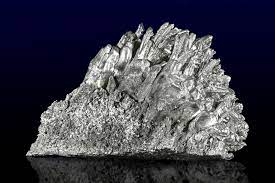Identity.
2.2 Magnesium (Mg) Magnesium is a silvery-white, lustrous, and
relatively soft metal which tarnishes slightly in air. Magnesium is
the third most commonly used structural metal following steel and
aluminum.
Atomic Structure:
The nucleus consists of 12 protons (red) and 12 neutrons (blue). 12
electrons (green) bind to the nucleus, successively occupying
available electron shells (rings).
History.
Magnesium was first isolated in 1808 by Sir Humphry Davy, who
evaporated the mercury from a magnesium amalgam made by electrolyzing
a mixture of moist magnesia and mercuric oxide. The name magnesium
comes from Magnesia, a district of Thessaly (Greece) where the mineral
magnesia alba was first found.
Magnesium was used as a curative as early as ancient times, in the
form of laxatives and Epsom salts. In the 1600's, water from the
famous Epson spring discovered in England was a popular curative,
used as an internal remedy and purifier of the blood.
Usage.
Magnesium is used in products that benefit from being lightweight,
such as car seats, luggage, laptops, cameras and power tools. It is
also added to molten iron and steel to remove sulfur. As magnesium
ignites easily in air and burns with a bright light, it's used in
flares, fireworks and sparklers.
-
Aircraft and car parts: Magnesium alloys are used to make
these parts lighter, which can improve fuel efficiency.
-
Beverage cans: Magnesium is used to strengthen aluminum
cans.
-
Construction materials: Magnesium oxide is used to make
fire-resistant bricks and cements.
Some of the benefits of using magnesium are:
-
Magnesium helps your muscles relax and contract properly, and it
also helps transmit signals between your nerves and muscles.
-
Magnesium is involved in insulin production and regulation, which
helps keep your blood sugar levels stable.
-
Magnesium helps relax blood vessels, which can lower blood
pressure.
-
Magnesium is involved in the production of ATP, which is the
energy source for your cells.
Sources.
Magnesium is widely distributed in plant and animal foods and in
beverages. Green leafy vegetables, such as spinach, legumes, nuts,
seeds, and whole grains, are good sources [1,3]. In general, foods
containing dietary fiber provide magnesium
Fruit juices such as orange juice, cherry juice, and watermelon juice
are all good sources of magnesium, potassium, and phosphorus.
Properties.
magnesium is a chemical element classified as an alkaline earth metal.
Magnesium has the characteristic properties of metals, such as:
metallic luster, high thermal and electrical conductivity,
malleability (ability to be shaped without breaking), and ductility.
Some properties of the element Magnesium: (1) Magnesium is the
alkaline earth metal. (2) Magnesium lies in group 2 of the periodic
table. (3) The atomic number of Magnesium is 12.

